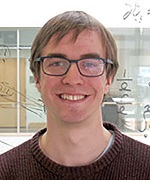Long-Range Coherent 3D Imaging for Objects in Motion
This webinar is hosted By: Laser Systems Technical Group
13 November 2024 13:00 - 14:00
Eastern Time (US & Canada) (UTC -05:00)
This webinar explores long-range coherent 3D imaging modalities. 3D imaging can provide a huge leg-up over 2D imaging in a variety of circumstances. For example, some autonomous vehicles use light detection and ranging (LiDAR) to perform 3D mapping of their surroundings, which provides more information about the pose and orientation of objects in their environment. In general, 3D imaging provides much more information about the pose and orientation of distant objects.
Here, we explore a somewhat unconventional subset of 3D imaging: long-range coherent 3D imaging. We will cover the theoretical basics behind long-range coherent 3D imaging, which uses digital holography to perform coherent detection, and some of the historical methods used for coherent 3D imaging.
Moving on from that, we discuss some of the hurdles faced by long-range coherent 3D imaging, namely, object motion/vibration. The original coherent 3D imaging techniques described here suffer when the object to be imaged is moving/vibrating, so we explore some unconventional techniques that are used to clear this hurdle. These techniques include: pilot-tone 3D imaging, stairstep 3D imaging, and multi-tone 3D imaging, which are all actively being researched. There are complex tradeoffs between each of these imaging modalities (especially in the presence of sensor noise), which we explore in detail.
Subject Matter Level: Introductory - Assumes little previous knowledge of the topic
What You Will Learn:
• What other researchers in the the Laser Systems Technical Group are interested in 3D imaging
• Potential simulation techniques for long-range coherent 3D imaging
• Potential future methods for long-range coherent 3D imaging
Who Should Attend:
• Undergrads who are interested in optics
• Grad students who are currently researching optics or 3D imaging methods, specifically
• Researchers who are interested in unconventional 3D imaging modalities
About the Presenter: Matthias Banet from Air Force Research Laboratory, Directed Energy Directorate (AFRL/RD)
 Matthias Banet received his PhD in optics while working with Dr. James Fienup at the University of Rochester. His research interests include imaging through atmospheric turbulence, atmospheric modeling, and coherent 3D imaging. After completing his PhD, he began working as a research physicist at the Air Force Research Laboratory, Directed Energy Directorate in Albuquerque, New Mexico. He is currently working in the modeling & simulation section and still actively researches coherent 3D imaging with colleagues from the University of Rochester.
Matthias Banet received his PhD in optics while working with Dr. James Fienup at the University of Rochester. His research interests include imaging through atmospheric turbulence, atmospheric modeling, and coherent 3D imaging. After completing his PhD, he began working as a research physicist at the Air Force Research Laboratory, Directed Energy Directorate in Albuquerque, New Mexico. He is currently working in the modeling & simulation section and still actively researches coherent 3D imaging with colleagues from the University of Rochester.
